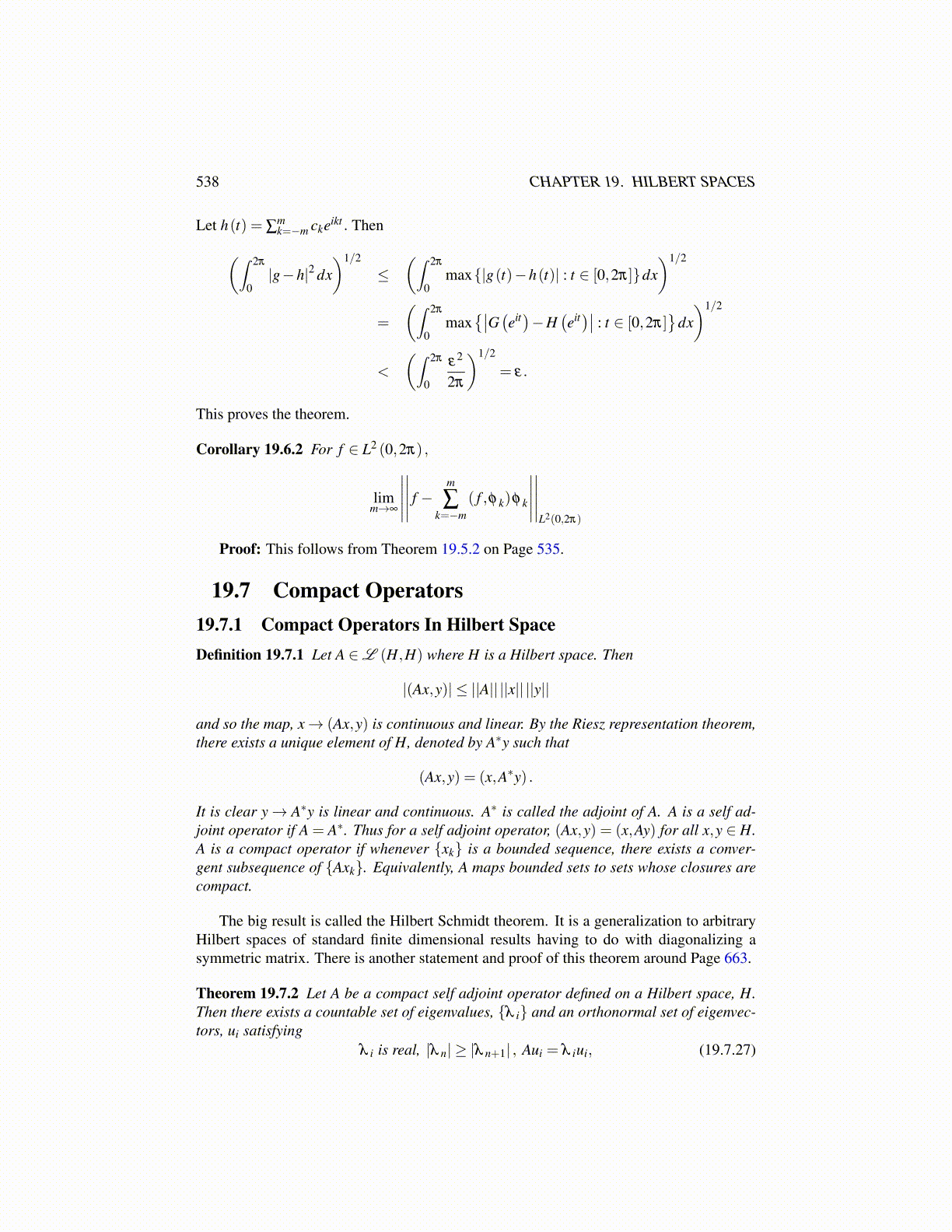
538 CHAPTER 19. HILBERT SPACES
Let h(t) = ∑mk=−m ckeikt . Then(∫ 2π
0|g−h|2 dx
)1/2
≤(∫ 2π
0max{|g(t)−h(t)| : t ∈ [0,2π]}dx
)1/2
=
(∫ 2π
0max
{∣∣G(eit)−H(eit)∣∣ : t ∈ [0,2π]
}dx)1/2
<
(∫ 2π
0
ε2
2π
)1/2
= ε.
This proves the theorem.
Corollary 19.6.2 For f ∈ L2 (0,2π) ,
limm→∞
∣∣∣∣∣∣∣∣∣∣ f − m
∑k=−m
( f ,φ k)φ k
∣∣∣∣∣∣∣∣∣∣L2(0,2π)
Proof: This follows from Theorem 19.5.2 on Page 535.
19.7 Compact Operators19.7.1 Compact Operators In Hilbert SpaceDefinition 19.7.1 Let A ∈L (H,H) where H is a Hilbert space. Then
|(Ax,y)| ≤ ||A|| ||x|| ||y||
and so the map, x→ (Ax,y) is continuous and linear. By the Riesz representation theorem,there exists a unique element of H, denoted by A∗y such that
(Ax,y) = (x,A∗y) .
It is clear y→ A∗y is linear and continuous. A∗ is called the adjoint of A. A is a self ad-joint operator if A = A∗. Thus for a self adjoint operator, (Ax,y) = (x,Ay) for all x,y ∈ H.A is a compact operator if whenever {xk} is a bounded sequence, there exists a conver-gent subsequence of {Axk}. Equivalently, A maps bounded sets to sets whose closures arecompact.
The big result is called the Hilbert Schmidt theorem. It is a generalization to arbitraryHilbert spaces of standard finite dimensional results having to do with diagonalizing asymmetric matrix. There is another statement and proof of this theorem around Page 663.
Theorem 19.7.2 Let A be a compact self adjoint operator defined on a Hilbert space, H.Then there exists a countable set of eigenvalues, {λ i} and an orthonormal set of eigenvec-tors, ui satisfying
λ i is real, |λ n| ≥ |λ n+1| , Aui = λ iui, (19.7.27)